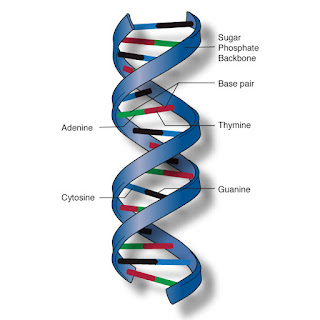Internationally competitive sports demand a lot from an athlete. From mental health, environmental conditions, anatomical structure, physiological capabilities to as small as genes. Sprinters are born not made. I am sure you have heard this term if you have come across an athlete. You will surely have a question in your mind How black ethnic people runs so fast?
It is true to some extent because of
the ACTN3 (Alpha Actinin 3). ACTN3 is also known as the sprinting Gene. The
researches are still scarce for this topic, but I will try to provide you the
maximum which is present out there.
Credits- England athletics
In many
reports, it is said that ACTN3 contributes around 2-3% in sprinting activities.
Statistically, it doesn’t seem too much but at international levels where every
stride counts 2-3% is what you need to grab the gold.
In this article, we will know about the most
amazing discovery in the field of athletics-related to genes. Don’t worry I will
explain it here in the simplest way to you. ACTN3 is responsible for the
encoding of a protein called alpha-actinin-3, in simpler terms the gene tells the
body to produce this protein. This protein functions as a structural component in
Z-line and is involved in the crosslinking of actin protein. One thing to keep in
mind is that this gene is only present in Type II (fast-twitch) muscle fibers,
those that produce greater force and contracts quickly as compared to slow-twitch muscle fibers or type II.
So there are
three forms of this gene
RR RX
XX
The R means
that there is more than one type of chromosome present in the cell. The X
represents that chain of chromosomes which inhibits the synthesis of protein.
You must be cleared that one chromosome came from your mother and other from
your father.
It all started in the 1990’s when Dr. Kathryn North a renowned pediatrician and clinical geneticist was working on genetic links to the muscle atrophies. Then she and her team found that ACTN3 was a potential gene in muscular atrophies but when they continued their study they found that 1 in every five in general the population is deficient in α actinin3 protein. From there they change the direction of their research from muscular disease to human muscle performance.
In the
proceedings of 14th International Conference of Sports Nutrition
(ISSN) a study was published by the T. Silver, et.al, they found no significant the difference in the increase in body weight, lean body mass and fat mass or
percentage body fat and there was no significant difference found in the 1 RM
bench press in the study groups.
However, the
another aspect is XX gene is racist. Yes, the XX genotypes (not suitable for sprinting) is present in approximately 25% of Asians, 18% of Caucasians, 11% of
Ethiopians, 3% of Jamaicans, and US African Americans and only 1% of Kenyans
and Nigerians. This could be the reason why athletes from black ethnic groups
are achieving more in sprinting and long-distance track events. They have dominated the sports from all
corners. Not only in the male category but also in the female category almost all the
records in long-distance and short-distance running are with black African
natives.
This doesn’t mean that this
sprinting gene or alpha actinin3 is the only reason for the success of
sprinters. In an interview published on The University of Sydney Youtube
channel Dr. Kathryn North said:
Credits- World Athletics
One of the reasons which make running different from other sports is that it needs only lace-up to start running and these countries have also spent on the equipment and the technology that has produced athletes like Usain Bolt and Yohan Blake. All these are developing countries where you don’t get such support from the starting of your career and not everyone can afford it. So, in villages, they are generally left with the athletics only. But, having a gene is not the only thing a person needs to be an Olympian. It still needs years and years of discipline and hard work.
For my blogs related to Physical education, you can visit the Physical education world
REFERENCES
https://www.frontiersin.org/articles/10.3389/fphys.2017.01080/full
https://www.ncbi.nlm.nih.gov/pmc/articles/PMC5741991/
https://www.sciencedirect.com/science/article/pii/S0002929707620242
https://nsuworks.nova.edu/cps_facpresentations/3618/




Awesome Content Brijesh Bhai !
ReplyDeleteVery gud brijesh.. nice content
ReplyDeleteGreat blog!
ReplyDeleteOh wow I never knew this. Thanks for sharing
ReplyDeleteVery informative blog
ReplyDelete